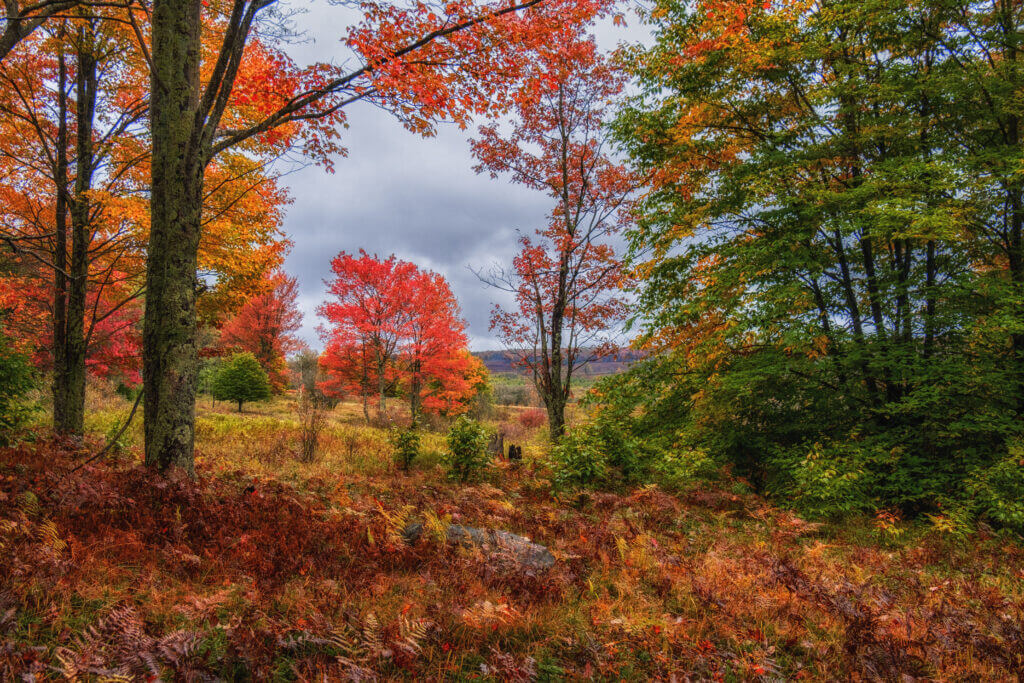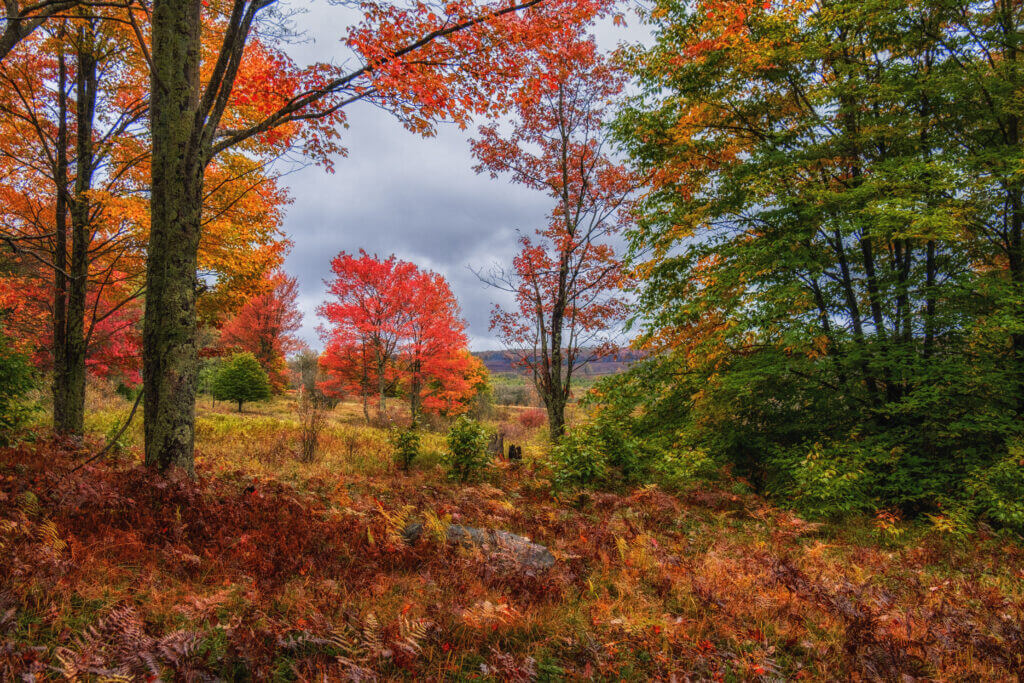
Legal genius and land speculator John Marshall took a keen interest in the Canaan Valley.
This story was originally published in the January 2018 issue of Wonderful West Virginia. To subscribe, visit wonderfulwv.com.
written by Stephen C. Schimpff
photographed by David J. Miller
Marshall is usually thought of as a legal scholar–statesman, the longtime chief justice of the United States Supreme Court who essentially molded the court into the arbiter of the Constitution, forged it as a co-equal branch of the federal government, and also further established the balance between the federal and state governments.
But before, during, and after his appointment to the court in 1801, he was busy amassing huge swaths of land. “Marshall … was one of the most astute and aggressive land speculators of his day,” wrote R. Kent Newmyer in his book John Marshall and the Heroic Age of the Supreme Court, “but he had no desire to live as a great planter. What land promised him was social status, security for his family, and a legacy for his children.”
One of the areas that piqued the chief justice’s interest was the Canaan Valley. Thirteen miles long and five miles wide, the area’s boreal forest featured huge stands of red spruce and hemlock lining the north-facing mountain slopes, with hardwoods like black cherry, sugar maple, birch, and beech on the remaining slopes and also on the higher ground of the valley.
This was not just another virgin forest. The height and girth of the trees surpassed any near and far. It was truly magnificent in its pristine glory.
A Good Deed
Marshall and his brother James were intensely interested in owning land, but not just any land—they wanted the best lands available in Virginia.
Following the Revolutionary War, the Commonwealth of Virginia owned the Canaan Valley. Members of the Harness family then obtained nearly the entire valley in the late 1700’s. In 1796, George Harness, a wealthy farmer near Moorefield, along with two colleagues obtained a patent for 28,702 acres, or about three-quarters of the valley.
Harness bought out his friends in 1800 and, in 1806, sold a 50 percent undivided interest to his brother Joseph—who in turn transferred it to John Marshall, his brother James, and his nephew Thomas Ambler. The patent consisted of the whole valley north of today’s Timberline Road.
The trio’s 50 percent share of the Canaan Valley included 14,351 acres, all held as undivided interests. Per agreement, John owned 6,000 acres, James owned 6,000 acres, and Ambler owned the remainder.
There is no record of why the Marshall group made this purchase. We might presume they saw the incredible boreal forest and appreciated that it would be worth a fortune—once a means to transport the lumber to market was developed.
John Marshall died in 1835. His will, written out in his own hand after the death of his wife in 1831, is very specific. He had great land holdings plus bank and railroad stock, which he distributed among his children. But he dealt with his Canaan property differently and quite specifically. “I give to each of my grandsons named John one thousand acres, part of my tract of land known as Canaan in Randolph County,” he wrote. Perhaps an unusual approach to land distribution after death, but it is clear that he was familiar with this holding, its common name, and its location despite all of his other vast holdings.
His brother James Marshall left his 6,000 acres to his descendants when he died in 1848. Thomas Ambler died without a will in 1875.
In 1855, Ann Rebecca Dailey, a granddaughter of George Harness, wanted to take title to her one-quarter share of her grandfather’s 50 percent interest in the Canaan Valley to use as security for a loan to upgrade her Glades Hotel in Oakland, Maryland. The Randolph County Court divided the total 28,702 acres in half, with the Harness heirs receiving the southern section and the Marshalls receiving the northern half.
The court then divided the Marshall lands into three tracts—6,000 acres for the six grandsons named John with each receiving a one-sixth undivided interest, 6,000 acres for the descendants of James Marshall also with undivided interests, and the remainder for Thomas Ambler, who was still living. As it turned out, the entire northern section’s initial survey was inaccurate and actually contained nearly 1,600 acres more than anticipated. But since the families of John and James Marshall were each to receive a defined 6,000 acres, Ambler got the extra acreage.
Becoming Today’s Canaan Valley
West Virginia’s U.S. Senator Henry Gassaway Davis had long planned a railroad linking the B&O Railroad in Piedmont to the Canaan Valley area. After many years of delay, it was finally completed to the new town of Davis in 1884.
A year before his railroad arrived in the area, Davis began to purchase the various shares of John Marshall’s heirs’ 6,000 acres, generally for about $5 per acre. Speculators had already purchased James Marshall’s 6,000 acres a few years prior for $18,000, and now sold it to Davis for $30,000. Although Ambler died without a will, Davis tracked down his heirs and purchased the land, paying $3 per acre for a total of $11,736.
Henry Davis appreciated the value of the Marshall name and used it to create the Marshall Coal and Lumber Company, a subsidiary of his Davis Coal and Coke Company.
The 12,000 combined acres of John and James came to be known over the years as the “Marshall Lands” and the other section of 3,912 acres as the “Ambler Lands.” These terms persisted until well into the 20th century and can be found on maps at least through 1939.
Once the railroad reached Davis in 1884, lumber companies followed. Timber railroads were constructed and timbering began on the Marshall lands. As with all of the lands in Canaan Valley and the Blackwater Canyon, they were rapidly clear cut of their immense timber holdings.
The Marshall lands and the Ambler lands became the property of the Western Maryland Railroad when it bought out Henry Davis in 1902. In 1923, the railroad sold these properties to the Monongahela Power Company, a division of Allegheny Power Systems, which held them with the intent of creating a pumped water reservoir throughout the valley.
The U.S. Army Corps of Engineers denied a permit. The power company appealed, but the death knell for its plan came when the U.S. Supreme Court refused to hear the case. Was the old chief justice looking down?
Some of the land became the property of the U.S. government for the Canaan Valley National Wildlife Refuge. Another section became the Canaan Valley Institute property, now the Little Canaan Wildlife Management Area
It is notable that, to this day, the 14,000-plus acres of Marshall, Marshall, and Ambler remain undeveloped, other than a few improvements along route 93/48. Credit this to the patience of the initial owners’ anticipation that the Canaan Valley would yield its timber once a means of transport arrived, the power company’s decision to maintain these properties as a land bank with thoughts of a future reservoir, and various governmental agencies, abetted by local citizen groups, who created the wildlife refuge and the Canaan Valley Institute.
The result today is that most of the Marshall–Ambler lands will be perpetually preserved in their natural state—albeit much different from what it was prior to timbering.
This article is adapted from Fortune Seekers in the Promised Land: A Tale of Exploitation and Development in the Canaan Valley and Blackwater Region of West Virginia, available on Amazon.

